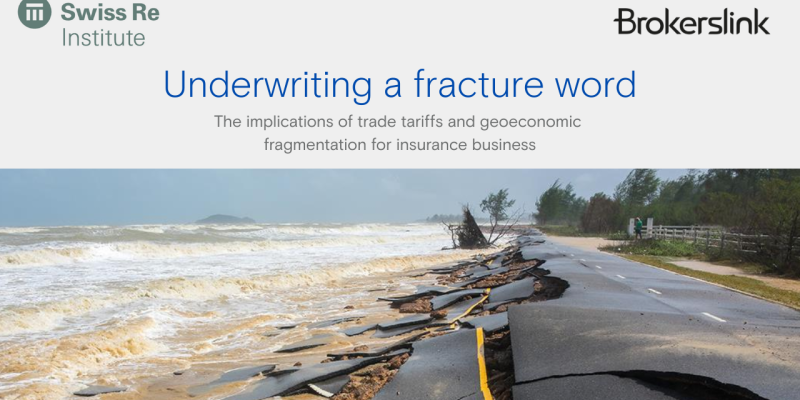Duane Lohn, Senior Managing Director, Global Risk & Resilience Practice Leader, GlassRatner
Over the last few years, we’ve seen a fundamental shift in how businesses approach resilience. What was once a back-office consideration, often relegated to a disaster recovery plan filed once, never referred to again, has become a top priority.
Resilience has been elevated right up to Board level, integrated into overarching Enterprise Risk Management (ERM) frameworks. It’s a cultural mindset that goes beyond merely developing a ‘plan B’, to proactively thinking ahead, scenario planning, disaster recovery simulations and frequent review and testing. We’ve certainly seen demands for our services spike in recent years, reflecting the increased focus on developing a resilience mindset.
The benefits of developing this mindset run beyond merely preventing loss. A robust resilience plan strengthens investor confidence and protects market share, distribution networks and market position. Put simply, modern businesses can’t afford not to bolster their resilience.
From efficiency to fragility
This transformation didn't happen overnight. Up until the last few years, we were seeing companies focused almost exclusively on consolidation as a cost-saving measure. Organizations were consolidating operations, warehouses, and manufacturing lines to drive operational efficiencies, but not factoring risk into these decisions. I've seen numerous cases around the world where companies suddenly realized all their assets were concentrated in just two plants globally, or they were manufacturing critical products in a single location. This vulnerability became starkly apparent when something went wrong.
The catalyst for change has been a convergence of global disruptions. COVID-19 probably triggered the initial shift, providing stark visibility into supply chain vulnerabilities, but then everything seemed to accelerate simultaneously. We're dealing with geopolitical tensions, unprecedented tariffs, supply chain disruptions, natural catastrophes at all-time highs, political unrest and protests across Europe and the US shutting down plants and businesses, escalating cyber risks, and AI emerging as both a powerful tool and a significant threat that can target millions of people in seconds. It’s a lot for the most sophisticated businesses to manage, but where we’re seeing real vulnerabilities is in the smaller to mid-sized enterprises, for whom this convergence of factors is a perfect storm of risk.
Enter the simulation
The thought processes around risk and resilience have fundamentally changed. Resilience is now number one, with redundancy and backup systems taking priority over pure efficiency gains. Companies are running simulations and models to determine optimal sourcing strategies, for example, whether to import bulk products for domestic packaging or finished goods, and how to navigate different tariff structures across various scenarios.
This shift is driving unprecedented demand for what I call resilience testing, something GlassRatner specialises in. We're conducting exercises and simulations across diverse scenarios, from geopolitical tensions affecting manufacturing in Taiwan to ransomware attacks on high-profile nonprofit boards. These aren't just academic exercises; they serve a critical purpose in testing response capabilities, clarifying decision-making protocols, and ensuring leadership teams are fully aware of all the potential risk scenarios and resilience plans.
The rise of resilience intelligence
What excites me most is the evolution toward resilience intelligence, a proactive rather than reactive approach to risk management. Instead of waiting for disruptions and then scrambling to respond, organizations are adopting operational resiliency frameworks that enable real-time decision-making. For example, when a hurricane is forecast four days out, companies can proactively reroute trucks and personnel, move assets, and shift production to alternative sites before impact occurs.
Importantly, resilience intelligence isn't just for large corporations. It may be even more critical for smaller and mid-size companies given their limited resources. I'm working with a 40-person flooring distributor in the Northwestern US - they're the largest in their region despite their size. They've been proactive in developing and testing plans, and it's paying off. They're picking up new business because clients expect these capabilities, and they're using their resilience as a competitive marketing advantage.
The stakes couldn't be higher. Research suggests that 50-70% of businesses fail within five years of a significant incident. I often think about a major potato chip manufacturer that consolidated operations into one mega-factory. When it burned down, they lost 24 months of production. Their retail presence shrank from four-foot store sections to single facings, market share losses that may prove permanent.
Regular testing remains essential. I recommend annual exercises at a minimum to refresh plans, update contact information, and adapt to changing business environments. Companies should start with exercises, which will naturally drive plan updates and improvements.
Brokerslink’s Risk Managers Forum in October is dedicated to the topic of business interruption and I’m looking forward to exploring themes of resilience and resilience intelligence with our cohort of risk management professionals from around the world. After all, the integration of resilience planning with business strategy represents more than operational prudence; it's fundamental for business survival in our increasingly volatile world.






